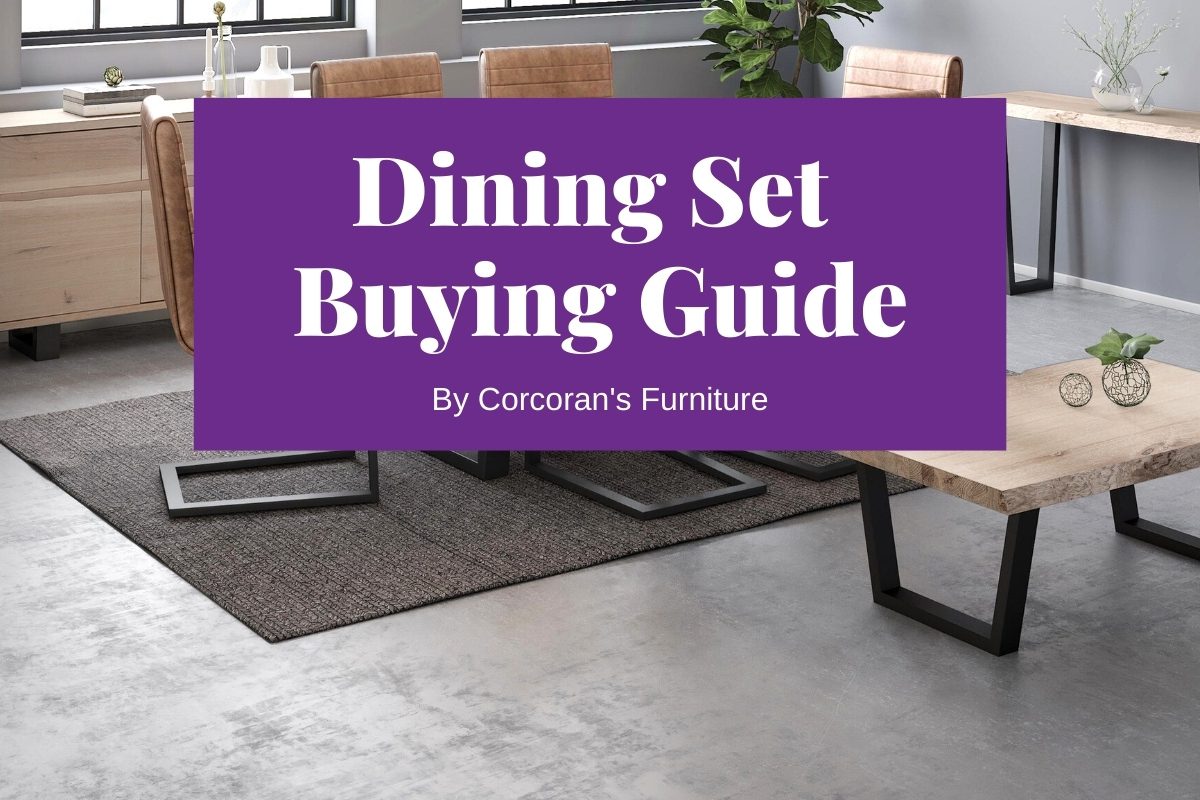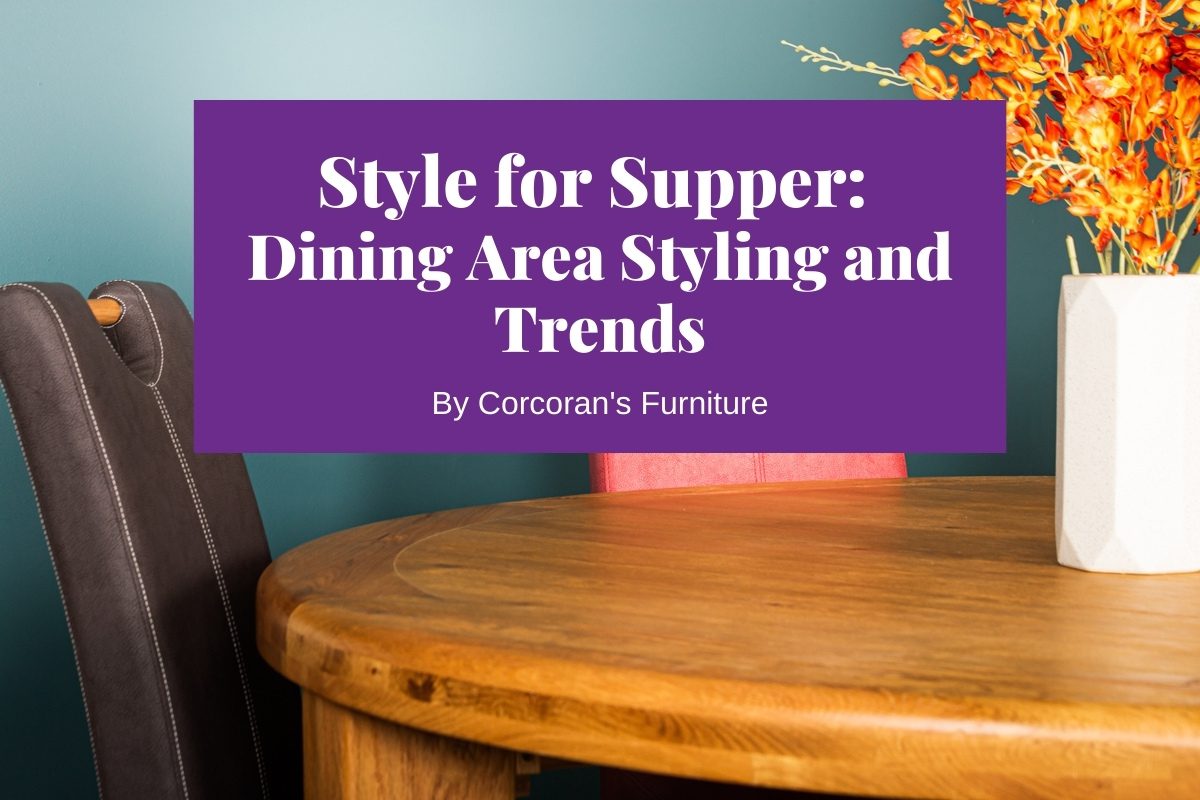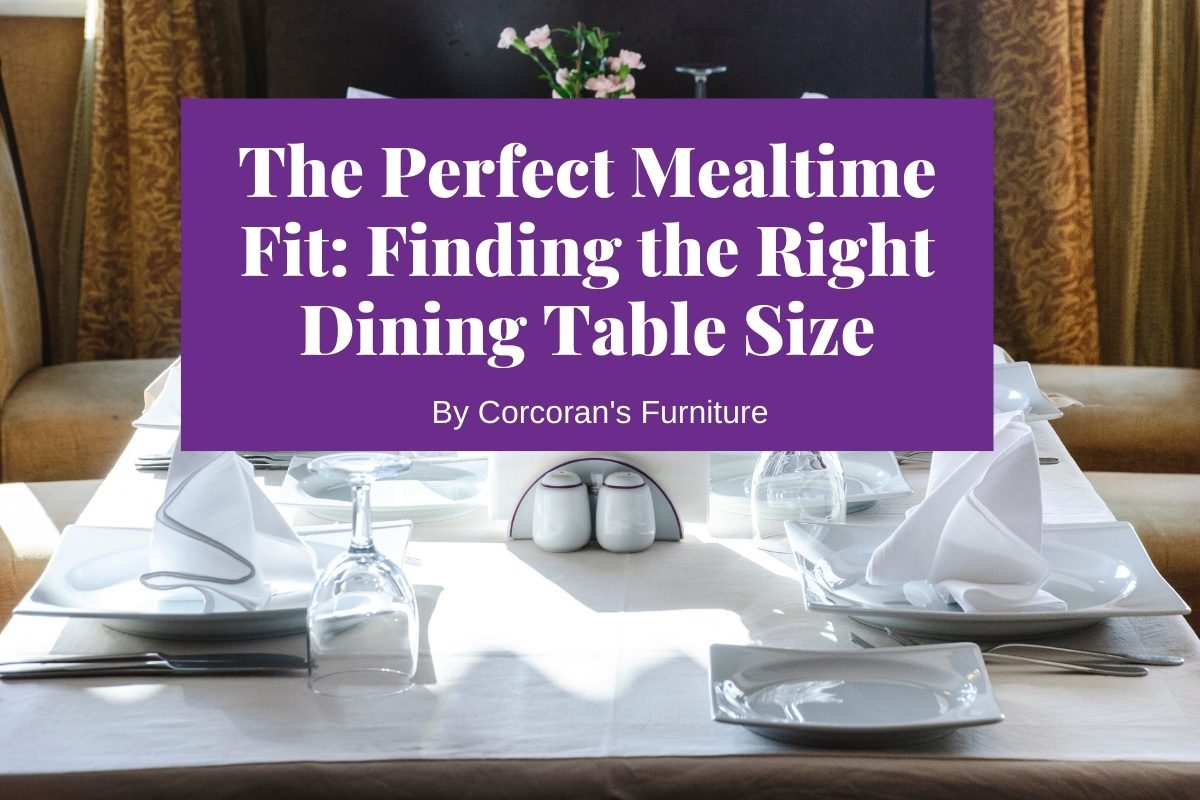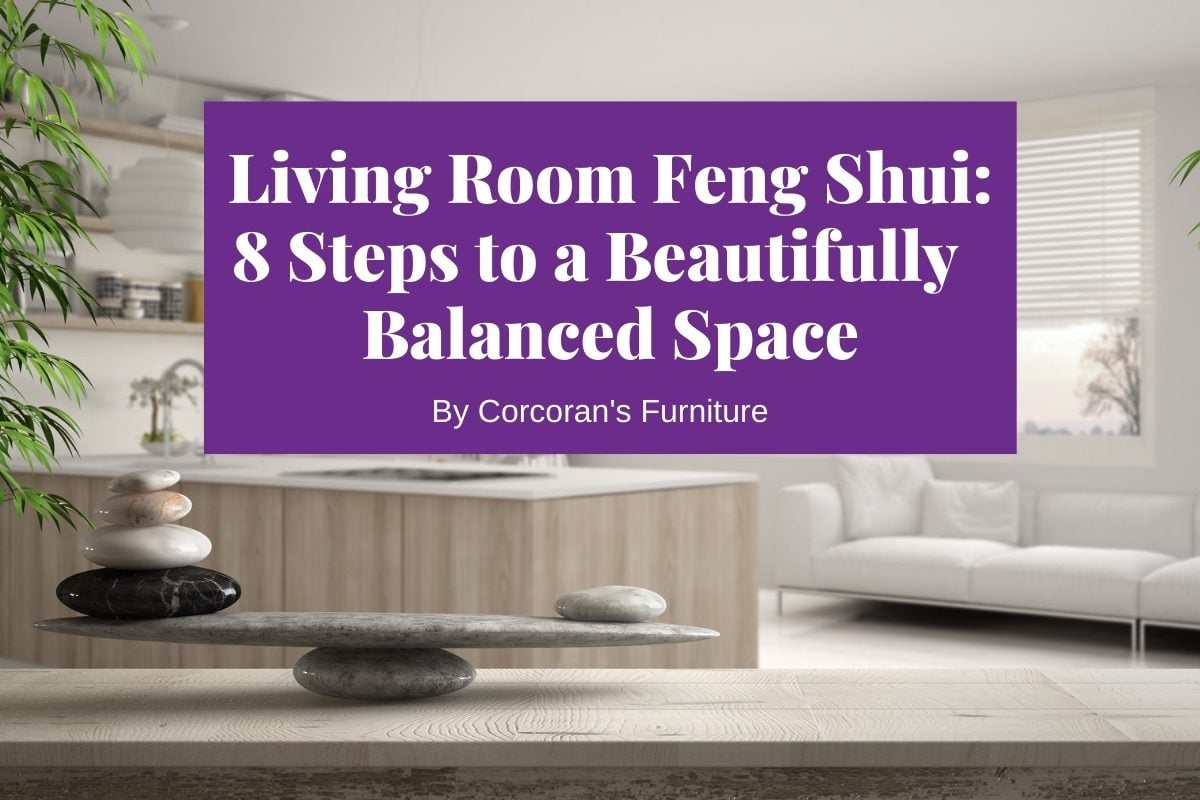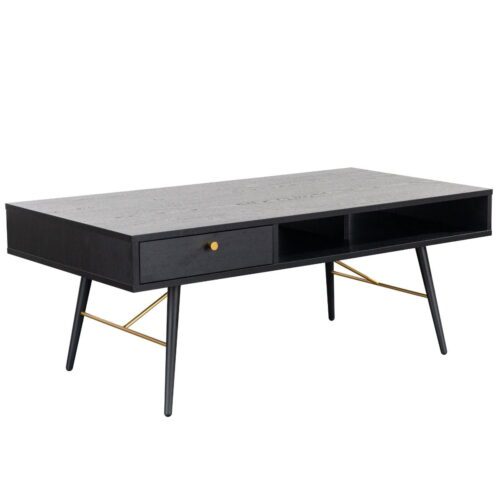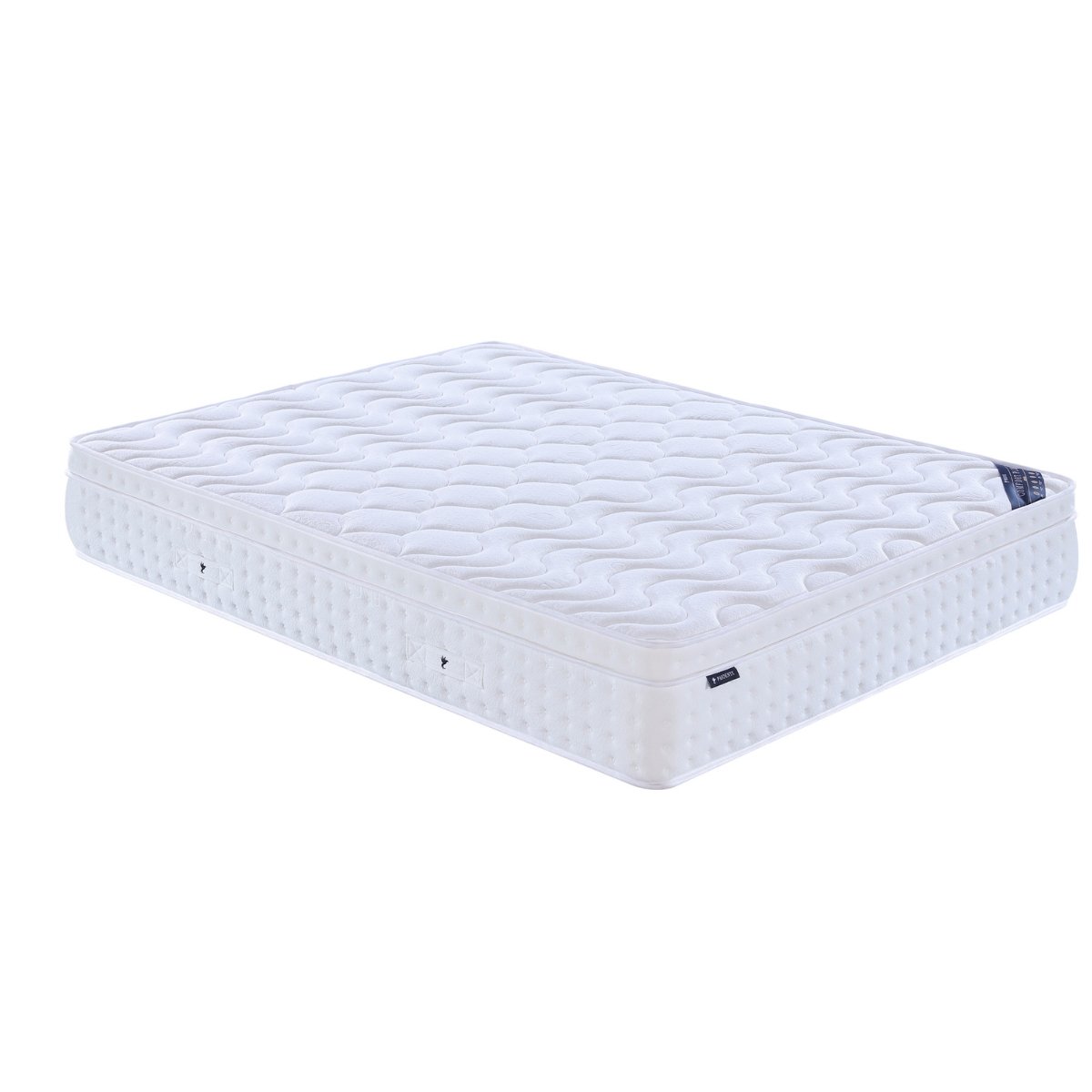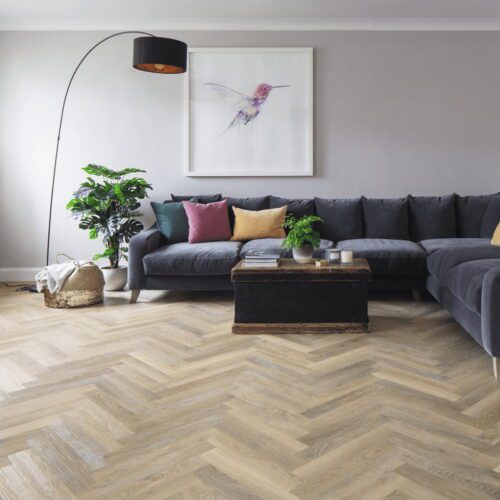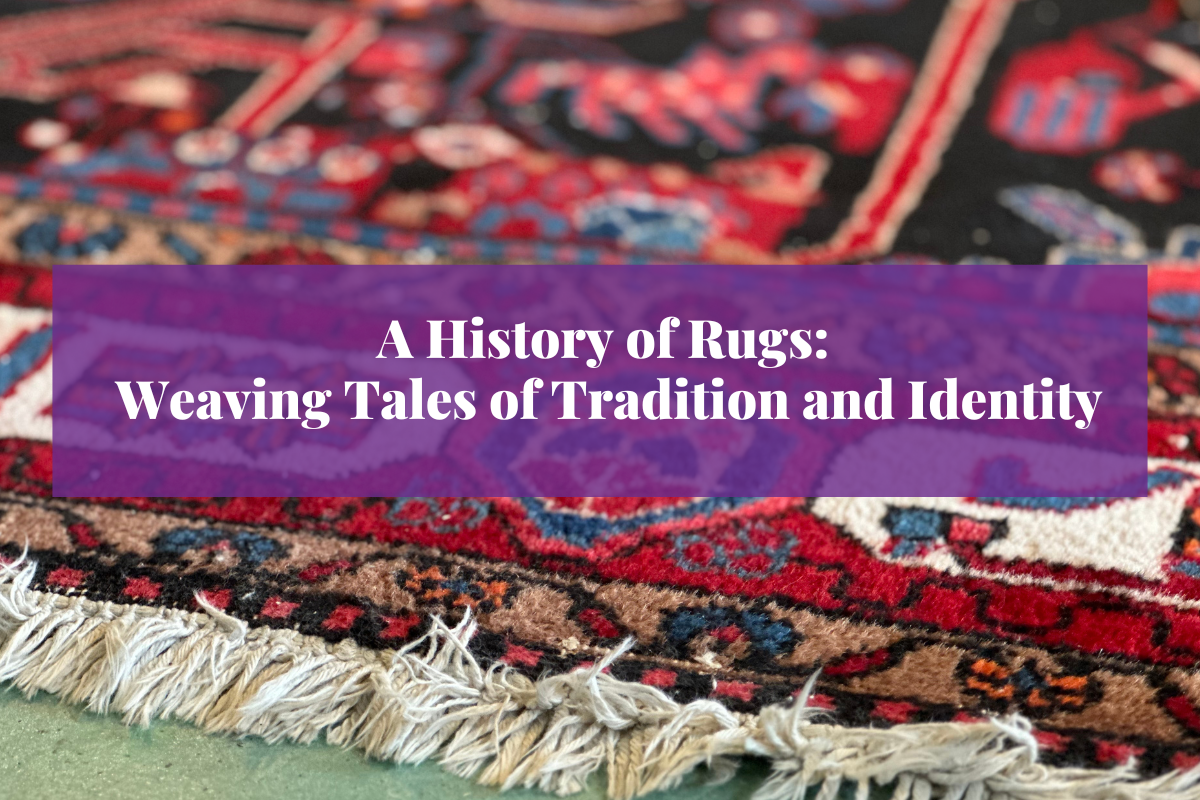A Brief History of Rugs: Weaving Tales of History and Identity
Rugs have graced floors across the globe for thousands of years. These woven wonders play a far more significant role than simply mere floor coverings; they’re storytellers of human history.
From ancient civilisations to modern homes, rugs have played a crucial role in shaping cultures and societies. Each pattern, colour, and motif tells a unique tale of the people who crafted it. Rugs have been used to mark important rituals, showcase wealth, and express religious beliefs.
As you explore the history of rugs, you’ll discover a rich tapestry of human ingenuity and creativity. From the intricate designs of Iranian rugs to the bold patterns of Moroccan carpets, each style reflects the unique heritage of its region. These textile treasures continue to captivate us, bridging the gap between ancient traditions and contemporary design.
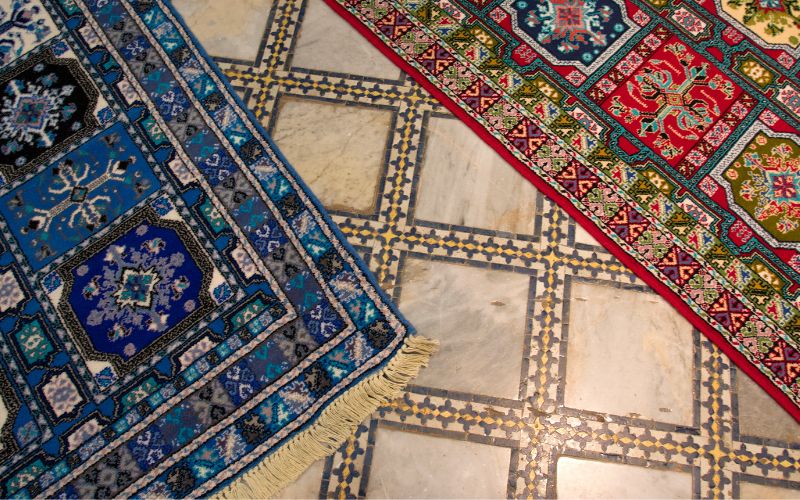
Historical Development of Rug Weaving
The rich history of rugs and rug weaving spans thousands of years. It evolved from basic floor coverings to intricate works of art, influenced by trade, cultural exchange, and artistic traditions across civilisations.
Ancient Origins and Civilisations
Rug weaving dates back to ancient times. The earliest known carpet was found in Siberia, dating to 500 BC. The ancient Egyptians, Mesopotamians, and Chinese all practiced rug-making.
In Persia, now Iran, rug weaving became highly sophisticated. The Achaemenid Empire (550–330 BC) saw the creation of exquisite carpets. These early Persian rugs set standards for quality and design.
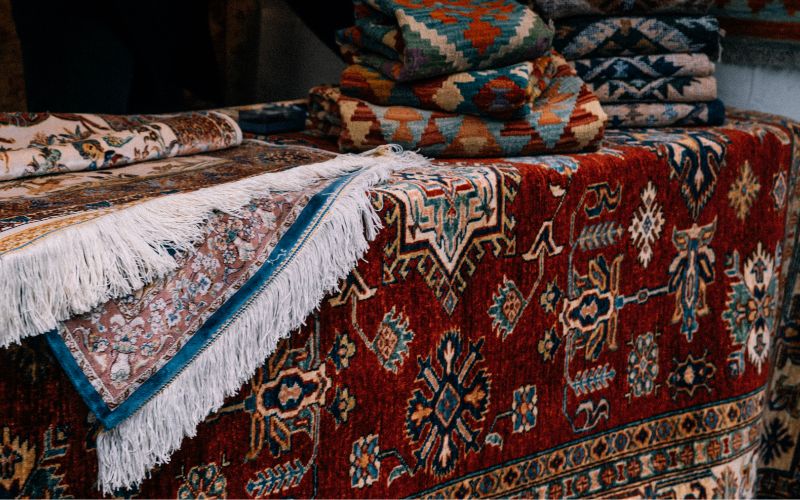
Ancient civilisations used rugs for practical and artistic purposes. They provided warmth, decorated homes, and displayed wealth.
Nomadic tribes in Central Asia and the Middle East also played a crucial role in developing rug-making techniques.
The Silk Road and Cultural Exchange
The Silk Road had a significant impact on the history of rugs. This network of trade routes connected East Asia and the Mediterranean world. It allowed for the exchange of goods, ideas, and artistic styles.
Merchants carried rugs along the Silk Road, spreading designs and techniques. Chinese motifs appeared in Persian rugs, while Central Asian patterns influenced Chinese textiles. This cultural exchange led to new styles and methods in rug-making.
The Silk Road also introduced new materials. Chinese silk became prized in Western rug production. Dyes from various regions enhanced the colour palettes of rugs across cultures.

The Influence of the Ottoman Empire
The Ottoman Empire also significantly shaped the history of rugs. From the 14th to early 20th centuries, it fostered a thriving carpet industry.
Under Ottoman rule, carpet weaving transformed from a small-scale craft to a state-wide industry. Court workshops created new patterns, moving away from traditional designs passed down through generations.
Ottoman and Anatolian rugs became highly sought-after in Europe. Their intricate designs and high-quality materials set new standards in the rug market. The empire’s influence spread beyond its borders, inspiring weavers in Persia and the Caucasus.
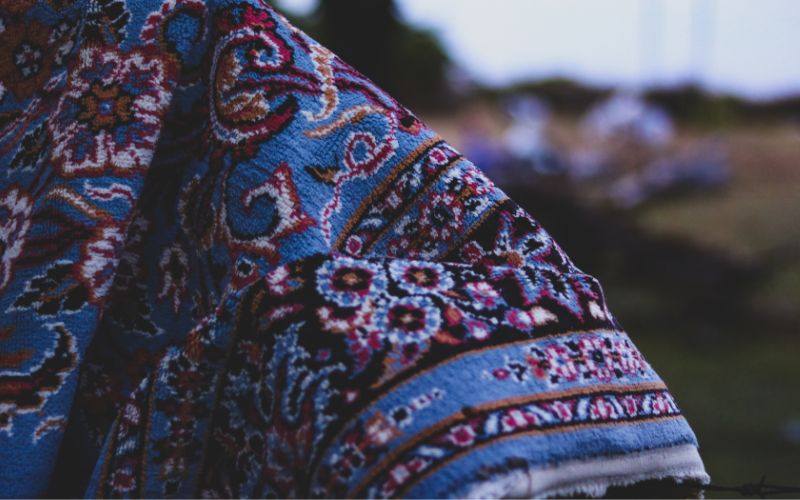
European History of Rugs
Europe’s history of rugs began later than in Asia. Initially, European nobles imported rugs from the East. By the 17th century, France and England had started their own rug production.
The Savonnerie factory in Paris, established in 1627, produced luxurious carpets for French royalty. In England, the Axminster Carpets Company, founded in 1755, became famous for its high-quality rugs.
European rug designs often reflected local tastes. They incorporated elements of Baroque, Rococo, and later Art Nouveau styles. These rugs adorned palaces, mansions, and public buildings across Europe.
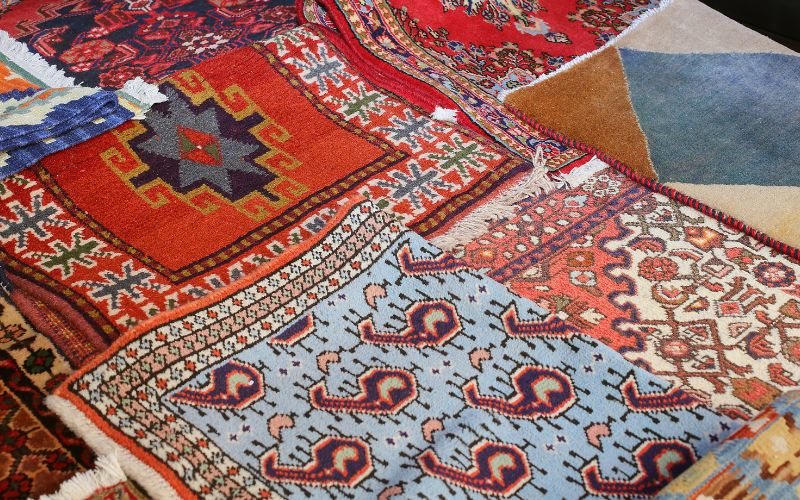
A History of Rugs in Ireland
Ireland has its own unique rug-making tradition. In 18th- and 19th-century Ireland, handmade rugs became a staple in many households, reflecting the resourcefulness and creativity of the Irish people. This tradition, known as “rag-rugging,” involved crafting rugs from recycled clothing and fabric scraps.
Families would meticulously hand-weave these materials into intricate patterns, creating unique and durable pieces that added warmth and personality to their homes.
Rag-rugging was not just a practical solution for floor covering but also a communal activity, often bringing together family members and neighbours.
This craft embodied the spirit of sustainability long before it became a modern buzzword, highlighting the ingenuity and frugality that were essential in Irish domestic life.
The legacy of rag-rugging continues to influence contemporary Irish textile art, celebrating a rich heritage of craftsmanship and resilience.
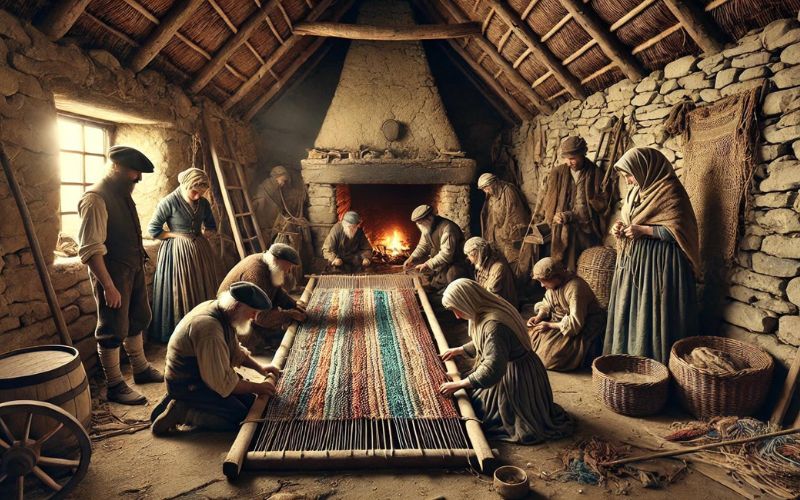
The Artistry and Techniques of Rug Making
Rug making combines skilled craftsmanship with artistic expression. The process involves carefully chosen materials, intricate weaving techniques, and meaningful designs that reflect cultural heritage.
Materials and Weaving Techniques
Rug makers use a variety of materials, including wool, silk, cotton, and synthetic fibres. Wool is prized for its durability and ability to hold dye well. Silk adds lustre and softness.
The two main weaving techniques are:
- Hand-knotted: Knots are tied around warp threads, creating a dense pile.
- Flat-woven: Weft threads are woven over and under warp threads.
Hand-knotting is labour-intensive but produces highly durable rugs. Flat-weaving creates thinner, reversible rugs like kilims.
Skilled weavers use looms to create intricate patterns. The knot density, measured in knots per square inch, determines the rug’s quality and detail level.
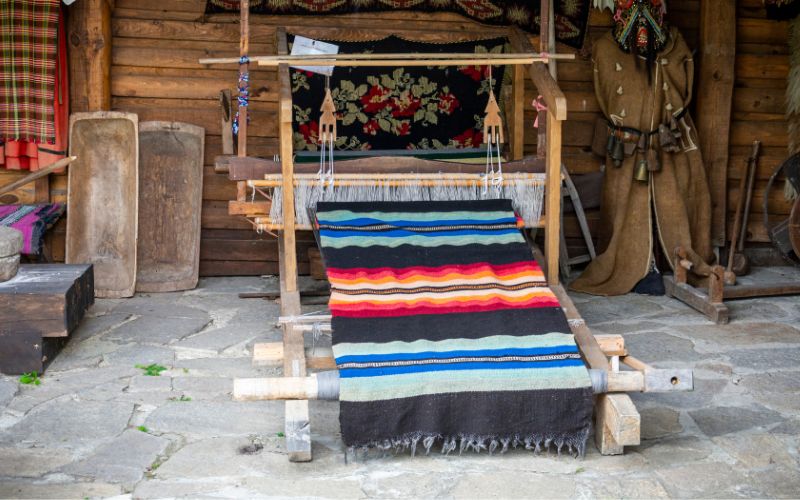
Motifs, Patterns, and Symbolism
Rug designs often carry deep cultural significance. Common motifs include:
- Geometric shapes
- Floral patterns
- Animal figures
- Religious symbols
These elements are more than decorative; they tell stories and represent beliefs. For example, the ‘tree of life’ symbolises the connection between heaven and earth in many cultures.
Colours also hold meaning. Red often signifies joy or good fortune, while blue represents spirituality.
The complexity of patterns showcases the weaver’s skill. Intricate designs require careful planning and execution, sometimes taking months or years to complete.

Regional Variations and Designs in the History of Rugs
Different regions have developed unique rug-making traditions in the history or rugs. Persian rugs are known for their elaborate floral patterns and rich colours. Turkish rugs often feature bold geometric designs.
Moroccan rugs showcase Berber influences with abstract patterns and thick piles. Central Asian rugs often depict nomadic life through stylised animal and plant motifs.
Each region’s designs reflect local culture, available materials, and historical influences. Climate also plays a role; cooler regions tend to produce thicker, warmer rugs.
You’ll find that authentic regional rugs are highly valued for their craftsmanship and cultural significance. Many collectors seek out these pieces as art forms in their own right.
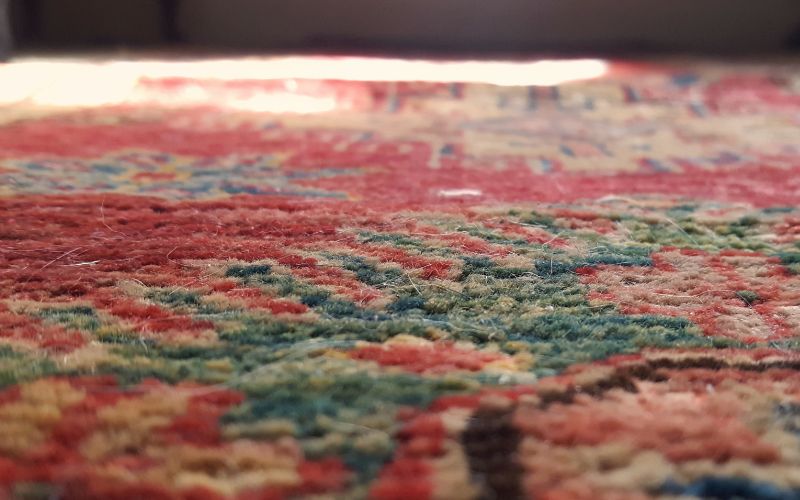
Cultural and Social Significance
Rugs hold deep meaning in many societies. They play important roles in ceremonies, become prized collectibles, and remain staples of home decor.
Rugs in Ceremonies and Traditions
Rugs feature prominently in cultural rituals. At Turkish weddings, couples often stand on an ornate rug during the ceremony. This symbolises a blessed foundation for their marriage.
In some cultures, a special rug is laid out to welcome a newborn baby. This tradition represents the child’s warm reception in the family and community.
Prayer rugs are vital in Islamic worship. Muslims use these portable mats to create a clean space for daily prayers, no matter where they are.
Rugs also serve as meaningful gifts. You might receive one to mark important life events like coming of age, marriage, or setting up a new home.
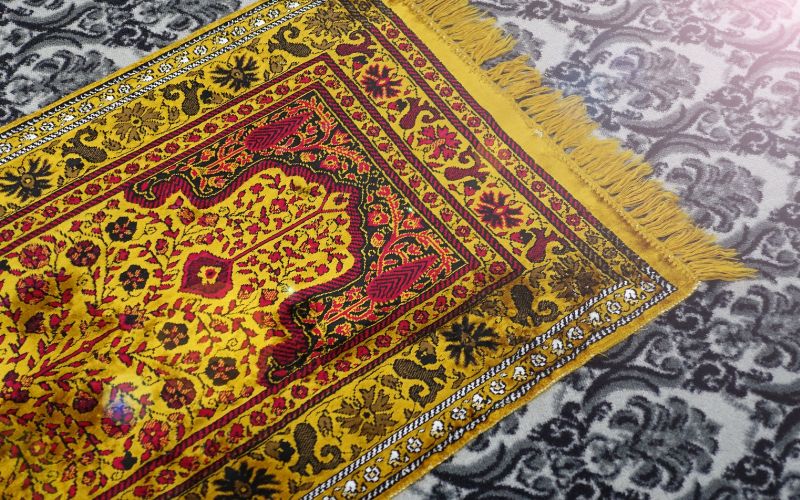
Rug Collecting and Museums
Rug collecting is a serious pursuit for many enthusiasts. Rare and antique rugs can fetch high prices at auctions. Collectors value these pieces for their craftsmanship, history, and artistic merit.
Many museums worldwide showcase impressive rug collections depicting the history of rugs. These exhibits help preserve and share rug-making traditions with the public.
You can find stunning displays at places like:
- The Carpet Museum of Iran in Tehran
- The Turkish and Islamic Arts Museum in Istanbul
- The Textile Museum in Washington, D.C.
These institutions offer a chance to admire exquisite rugs from various periods and regions.
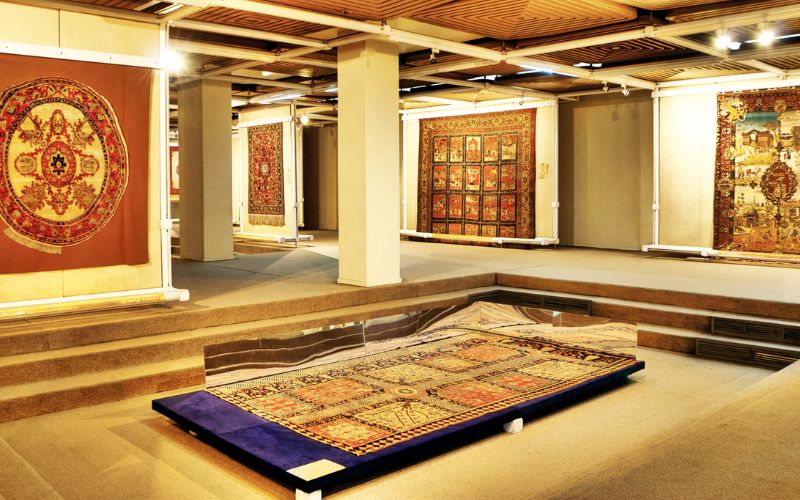
The Appeal of Ancient and Vintage Style Rugs in Modern Homes
In contemporary homes today, while there are a plethora of rug types on the market to choose from, the allure of ancient or vintage-style rugs such as Persian, Anatolian, tribal, and various motif-based rugs is undeniable.
These timeless pieces infuse warmth, texture, and a narrative of historical artistry into modern spaces. They can act as focal points or as a unifying element that pulls together various components of a room’s décor.
Designers and homeowners often use these rugs to ground a space with a sense of history and authenticity, making modern environments feel more lived-in and layered.
These rugs are particularly popular in living room areas, whereby the rich colours and complex patterns contrast strikingly with minimalist, contemporary aesthetics, offering a visual feast that complements the clean lines of modern furniture.
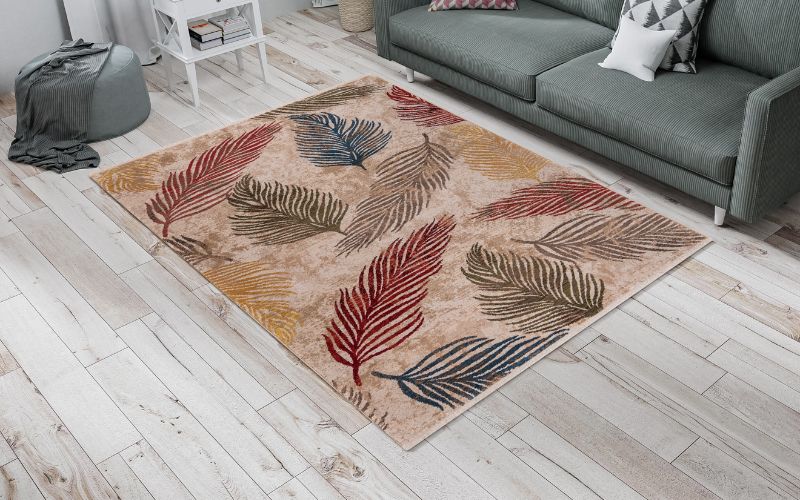
The history of rugs is a vivid chronicle of human expression and cultural interconnection. From the intricate weaves of Persian masterpieces to the bold geometric patterns of Anatolian mats, each piece carries the whispers of the past, telling tales of ancient civilisations, their artistry, and their way of life.
As these timeless textiles find their places in our homes today, they continue to enchant and inspire, blending historical significance with contemporary style.
This enduring fascination with the history of rugs underscores their role not just as decorative elements but as enduring symbols of cultural heritage and artistic endeavour that bridge generations and geographies.
Ready to learn everything there is to know about rugs? Discover the perfect rug for your space with our ultimate guide to choosing rugs for your home. Explore styles, materials, and placement tips to elevate your decor. Start your journey to finding your ideal rug today! You can also shop our collection of rugs here.
Nicola O'Sullivan holds the position of PR Manager and Interior Design Writer at Corcoran's Furniture, where she applies her sharp eye for interior design. She is in the process of earning a diploma from the globally recognised Interior Design Institute, further enhancing her expertise in the field.






